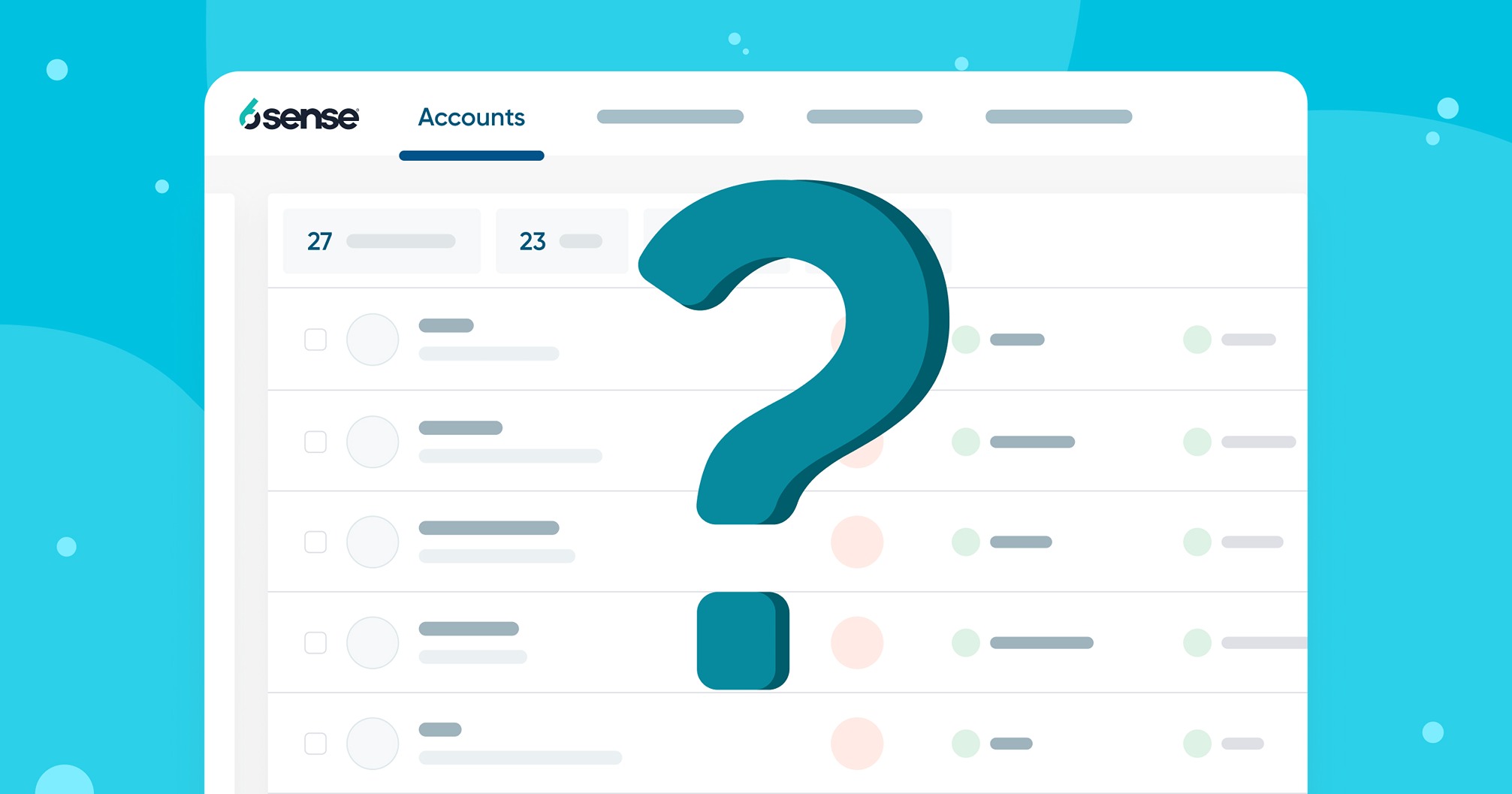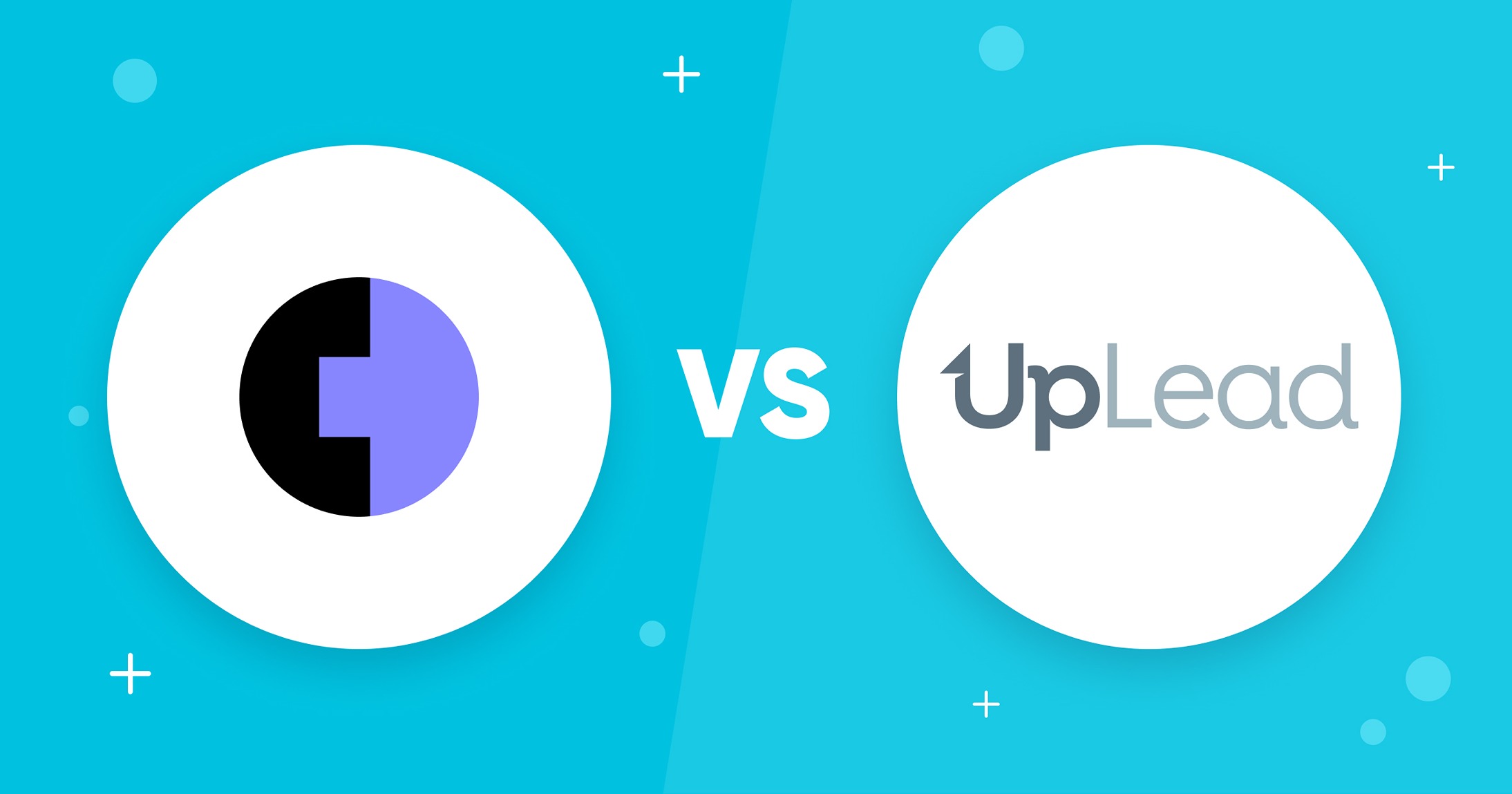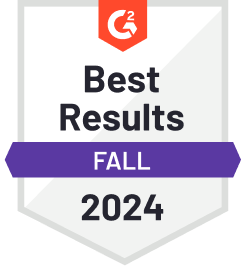Data is leading the way in marketing – knowing relevant marketing statistics is vital for the success of your business. Did you know that 96% of internet users aren’t ready to make a purchase the first time they visit your site? How about the fact that 70% of marketers believe that PPC campaigns are less successful than organic SEO? From general marketing stats to stats for specific marketing channels, we’ll take you through the most relevant B2B marketing statistics for 2024.
2024 is a year for AI tools and platforms, but it’s important to remember fundamental marketing practices. No matter how advanced the tools become, the team behind the campaign makes the magic happen. Let’s dive into some relevant stats and what’s driving new (and old) marketing trends in 2024.
General Marketing Statistics
Throughout the last few years, business-to-business marketing has seen significant changes due to the emergence of AI tools, the increasing use of data-driven strategies by organizations, and numerous Google updates.
If you’ve begun to consider your strategy for 2024, you probably have many concerns and uncertainties. Here’s a list of B2B marketing data from a survey conducted by Databox that will assist you in setting objectives, creating a winning plan, and gauging performance in 2024. This will help you address these issues and decide which marketing strategy is best for your B2B company.
1. Most Often, Sales Growth Is Achieved Through Intent Data
According to a recent study, almost 80% of businesses employ intent data to increase sales. To determine which user segments have the greatest potential for conversion, examine intent data.
Although not every user who visits your website is thinking about making a purchase, you can find individuals interested in your goods or services if you divide up your user base according to how they interact with it. You’ll benefit from improved lead nurturing, ad targeting, and other areas.
Examine various approaches for gathering internal data. Some popular methods to obtain internal insights are chats with customers, Google Analytics, and native social media analytics on relevant platforms.
2. most businesses say closing a deal takes more than a month.
Closing a deal takes more than one month for most respondents (more than 30%), with the largest proportion lasting up to three months. Boost the efficiency of your sales cycle with lead scoring. By concentrating your energy on high-intent leads, you can increase the sales you make and their likelihood of converting.
3. Finding the Decision-Makers Early on Often Results in a Faster Deal Closure
Research indicates that the key to concluding a business deal more rapidly in B2B is promptly identifying the decision-makers. Aligning the sales approach to the buyer’s journey and combining marketing and sales activities come next.
4. Most business-to-business marketers engage in podcasts every week, particularly when they commute or drive.
Nearly 40% of people listen to three or four B2B podcasts weekly, whereas a majority listen to at least one each week. The majority of respondents admitted to listening to podcasts while commuting or driving. Not only are podcasts an effective learning tool for advertising professionals, but they are also an emerging content type that businesses are adopting to connect with potential customers.
B2B Lead Generation Statistics
By looking at these important lead generation statistics, you may better understand the impact and importance of B2B lead generation on organizations.
1. 96% of internet users aren’t prepared to make a purchase.
It’s crucial to realize that not every visitor to your website will immediately become a lead or a sale regarding funnel creation. In actuality, most website visitors aren’t prepared to make a purchase; this is particularly true for business-to-business (B2B) organizations with many decision-makers.
Thus, increasing website visitors provides avenues for obtaining these leads. Make use of call-to-action (CTA) buttons to direct users to subscribe to email lists, complete forms, and other tasks.
2. Lead generation, according to 91% of marketers, is their top priority.
Since producing quality leads is what converts to sales, a lot of marketers are concentrated on obtaining leads for their businesses. Your company will generate more income and better leads by concentrating on lead generation.
3. 80% of fresh leads never become customers.
Converting fresh leads into clients or customers is one of the most difficult aspects of lead generation. But the truth is that a large percentage of fresh leads will never result in revenue for your business. It’s critical to realize that it’s common for not every lead you generate to convert.
However, what steps can you take to convert more potential leads into sales?
Personalized marketing is essential to increase the number of leads that become sales for your company. Giving those leads the knowledge they need can encourage them to become customers.
4. Turning prospects into buyers is the top objective for 74% of businesses.
Creating leads should be your first goal if you want your firm to expand online. It’s critical to remember that obtaining leads is just half the fight; the other half is conversion. You can encourage those leads to convert by implementing a comprehensive marketing plan addressing every sales funnel stage.
5. For 65% of firms, generating visitors and leads is the greatest challenge.
In case you’re like more than 50% of organizations, you face difficulties in producing leads and traffic. Getting traffic and leads is difficult enough, but getting qualified leads that become customers is even harder. For this reason, having a customized marketing plan in place is essential to assist you in attracting quality visitors that generate qualified leads.
6. 63% of customers who inquire about your business won’t decide to buy for at least three months.
The likelihood that the prospects you create won’t convert immediately is one of the obstacles to lead creation. Many of them require time to determine whether you’re the proper match.
This implies that you must implement a robust lead nurturing plan to maintain leads’ engagement and interest in your company.
7. Only 44% of your potential customers will make a purchase.
Many companies make the error of pushing leads toward conversion when more than half aren’t ready to make a purchase just yet. Because of this, it’s imperative to monitor leads as they navigate the sales process and provide them with information at the appropriate moment.
8. For 54% of marketers, enhancing lead quality is the biggest challenge.
If the leads you generate have little chance of becoming customers, it is useless to generate them. Driving quality leads is crucial, but many firms find it difficult to achieve.
9. Lead generation accounts for at least half of the marketing expenditure for 53% of marketers.
A significant portion of your lead generation budget will be allocated to purchasing techniques that assist you in generating leads for your company. Search engine optimization (SEO) and pay-per-click (PPC) advertising are two tactics you might use to increase the volume of quality leads.
10. One of the biggest problems facing 41% of marketers is producing more leads.
Businesses sometimes struggle not just to generate leads for their firm but also with the quality of those leads. Because of this, utilizing an omnichannel marketing strategy—combining many tactics—is essential for increasing lead generation chances.
B2B Email Marketing Statistics
Email marketing is essential for the growth of B2B businesses. Here is a list of important email marketing statistics that you should know:
1. By 2027, email advertising revenue is projected to reach $17.9 billion globally.
2. Four out of five marketers claim that giving up social network marketing would be preferable to giving up email marketing.
3. 98% of millennials and Gen Xers use their emails above any other demographic.
4. One-third of the world’s population has two email accounts.
5. 63% of individuals who open an email look for a deal.
6. 99% of email users read their mailbox each day.
7. Videos are used in email marketing campaigns by 48% of brands.
8. Making emails mobile-friendly is the next most common tactic used by email advertisers to boost return on investment.
9. Twenty percent of email marketing initiatives are not mobile-friendly.
10. For each $1 you invest in email marketing, you may potentially receive an incredible $42 in return.
B2B Digital Marketing Statistics
If you are an entrepreneur looking for the most up-to-date insights into the digital marketing industry, these figures shed light on the most common forms of online advertising and their potential effects on corporate technology.
1. By 2026, the digital marketing sector is expected to grow to $807 billion.
2. At $202.40 billion, search engine marketing is the largest segment of the digital market.
3. According to 49% of advertisers, organic search offers the highest ROI (return on investment).
4. Digital ads can raise brand recognition by 80%.
5. More than 90% of consumers check online reviews before purchasing.
6. 54% of consumers claim to be irritated when they see an advertisement for a product they have already purchased.
7. According to 78% of marketers, their small marketing team consists of one to three individuals. A writer (52%), a social media manager (36%), and an SEO expert (34%), on average, were on these teams.
8. Buyers are at ease with companies openly using their data, according to 58% of them, but just 63% believe that businesses publicly utilize their information.
9. Every day, an average person views 5,000 advertisements.
10. 52% of marketers rank audience research as their top priority, followed by social media, networking, and content quality improvement.
B2B E-commerce Statistics
By 2027, it is anticipated that the size of the worldwide B2B e-commerce market will be $18,771.4 billion. Based on McKinsey B2B statistics, it is now expanding, and we are seeing eCommerce overtake in-person sales in importance. The growing B2B e-commerce data is listed below, which you may use to strengthen your competitive edge in your company plan.
1. Businesses continue to migrate to the cloud as they become aware of its benefits and adopt remote working practices. Gartner says more than 20% of consumers will purchase cloud storage soon.
2. Forbes reports that over the previous three years, there has been a 250% growth in the number of mobile B2B transactions.
3. By 2025, it’s predicted that B2B e-commerce in the US will surpass $710 billion in sales through mobile devices.
4. According to 62% of respondents, a negative mobile buying experience will make them less inclined to purchase a brand.
5. Compared to just 54% of non-headless enterprises, 77% of companies that use headless technologies develop new channels.
6. By 2025, Statista projects that the VR market will have grown from $12 billion to $22 billion.
7. 25% of the population will devote an hour a day to the metaverse by 2026.
8. Studies reveal that businesses with effective multichannel marketing strategies keep 89% of their current clientele on average, while those without such methods only keep 33%.
9. Recent findings state that by 2026, the international sector for social commerce will be worth $2.9 trillion.
10. When selecting their ideal purchase, 46% of B2B customers currently utilize social media to research products further or evaluate prices with rivals.
B2B Content Marketing Statistics
These B2B Content Marketing statistics might show how many prosperous companies have managed their marketing divisions over the past few years.
1. In 2020, 71% of the companies surveyed said they delegated their content promotion, up from 61% in 2021.
2. This year, Instagram (60%) and YouTube (56%) are some of the top media platforms that B2B executives favor, along with LinkedIn (86%), Facebook (79%), and Twitter (60%).
3. Facebook and Google Search marketing are the paid-for platforms with the best return on investment.
4. 73% of advertising firms claim to be effective in helping their clients achieve their content objectives.
5. Email newsletters, blog articles, and social media postings are the most popular three B2B content formats advertisers utilize.
6. When it comes to content marketing, 55% of B2B companies who are successful track their return on investment.
8. Just 88% of B2B top marketers put audience demands ahead of sales messages when creating content.
9. 60% of business decision-makers believe that company content aids in their ability to choose products, and 80% of them would rather learn about companies through articles than commercials.
10. By 2024, it is projected that the content marketing and marketing outsourcing sector will be valued at more than $600 billion.
B2B Marketing Budget Statistics
As you make budget plans for the year, it’s important to know marketing budget statistics for 2024 and how much other B2B companies have and are putting into their marketing. Here is a list of marketing budget statistics pulled from a recent report:
1. Every American company spends $14,575 yearly on marketing, or $481 billion overall. However, 66.3% of owners of small businesses invest less than $1,000 annually in advertising and marketing.
2. Significant outliers raise the average. Just 14.9% to 18% of all organizations spend most of their money on marketing.
3. Although 24% of entrepreneurs are dissatisfied with social media’s results, 60% think it’s the best marketing tactic.
4. 93% of companies that spend money on content marketing are happy with the outcomes, although less than 6% of entrepreneurs think it’s the greatest advertising tactic.
5. The cost of marketing services is 36.5% more than that of marketing products.
6. For the same amount of revenue, businesses that sell to consumers (B2C) must spend between 52% and 71% more than those that sell to businesses (B2B).
7. In the United States, there are more than 33 million firms that spend a total of $481 billion on marketing annually. This indicates that the typical American company invests $14,575 a year in marketing.
8. But the figure is heavy on the top. 14.9% to 18% of all businesses, ranging from sole proprietorships to widely traded companies, account for most marketing spending. In contrast, 63.4% of small companies make less than $1,000 in annual revenue.
9. The average value rate of return on investment for businesses is 10%, while the average is 12.3% of revenue.
10. Businesses allocate 53.4% of their marketing budget on online advertising on average. Traditional advertising accounts for 46.6% of marketing expenses for small firms.
B2B SEO Statistics
Being a step ahead of the curve in the world of SEO is not only a strategy but also a need in the dynamic world of B2B SaaS.
The importance of SEO for B2B software as a service grows even more apparent as we approach 2024. Recognizing the changing patterns and shifts in SEO is essential for keeping relevant as companies realize that their web presence, accessibility, and relevancy are critical to their growth.
Here’s a list of important B2B SEO statistics that you need to know:
1.68% of visitors to websites arrive via a search query.
The biggest and most effective marketing channel combines sponsored and organic search. Because of this, SEO is more crucial than ever.
2. Before making a purchase, 75% of consumers will search online for information.
Developing a relationship and trust is crucial for online consumer conversion. Businesses will carefully consider their choices before purchasing since they don’t want to waste their money. You can get the proper companies to find your content by using SEO.
3. Barely 0.63% of those surveyed made a click on a result that appeared on page two of their search.
Having your website found is undoubtedly the primary factor influencing SEO. According to the data, 54.4% of clicks go to the top three search results on the first page. Because so few people click beyond the first page of search outcomes, you need to have highly-ranked content to receive any traffic at all.
4 At least once a day, half of businesses check their SERP ranks.
If you don’t keep up with any changes, the competition for a top spot in SERPs is so intense that you risk falling behind very soon. Companies frequently set up automated notifications to respond quickly to changes in ranking positions.
5. Approximately 70% of marketers think that PPC advertisements are less successful at generating sales than organic SEO.
With a compensated job, it would be possible to “cheat” and appear on the first page. However, marketers and statistics show that PPC advertising is less successful. Considering how frequently people use ad blockers or disregard sponsored pages, it makes more sense to engage in organic SEO.
6. Traditional marketing techniques cost 67% more than content marketing.
Effective content marketing can yield significant financial gains. Although SEO takes longer to convert, the benefits will soon outweigh the effort, particularly because content marketing creates three times the leads per dollar invested as conventional advertising does.
7. Organic search traffic brings in twice as much money for businesses as other sources, such as social media.
Increased website traffic with SEO might result in higher-quality organic traffic. Organic traffic will almost certainly be a better fit for your offering and generate clicks that convert into leads with a higher probability of success.
8. Appearing in the top 10 search results probably only applies to 5.7% of pages.
Although ranking well in SERPs is the aim, placing your website there is not simple. It takes some time to reach the top 10, as evidenced by the fact that the typical age of a page there is not less than two years. Still, the numbers support the value of it.
9. The expense of acquiring new customers can be decreased by more than 87% with the right usage of content advertising and search engine optimization.
Gaining awareness can be accomplished extremely cheaply with content marketing. A company that consistently updates its blog will get 97% additional backlinks than a company that doesn’t, and hyperlinks are a great way to raise your SERP ranking.
10. For a whole year, less than 5% of pages remain on the top page of search engine outcomes.
Obtaining a prominent SERP listing is just one piece of the puzzle. The next task is to stay there. Because of the intense competition, you’ll need to keep a close eye on your rating and act fast to maintain your top spot.
B2B Video Marketing Statistics
Due to its potential to build relationships and trust in a virtual environment and its ability to provide complicated information in an easily assimilated format, video consumption in B2B marketing tactics has increased more than ever.
Here are the most recent B2B video marketing statistics, which illustrate the industry’s growth, effectiveness, and indisputable potential for companies hoping to succeed in the cutthroat market:
- Video is used in marketing tactics by 87% of B2B marketers.
2. Approximately 70% of academics and B2B purchasers interact with videos while purchasing.
3. Video content is recognized by 52% of business-to-business advertisers as having the best value for their investment.
4. Compared to non-users, B2B marketers who use video estimate a 49% faster increase in revenue.
5. Video is a powerful media and advertising medium for online interaction, according to 85% of B2B marketers.
6. 73% of business-to-business marketers said that using video has improved their marketing outcomes.
7. Email campaigns using B2B videos have click-through rates that are two to three times higher.
8. Forty-five percent of B2B marketers intend to augment their video marketing expenditures.
9. 50% of B2B buyers make purchasing choices using videos.
10. 65% of B2B companies have gotten clients via LinkedIn video marketing.
FAQs About B2B Marketing Stats
According to market predictions, US B2B marketing data expenditure is expected to expand by 2.5% in 2024, a little increase from the 2.3% growth in 2023 but still below epidemic inflation of above 4%.
They enjoy using outsourcing to streamline their operations. According to data, 62% of B2B marketing teams used a content marketing strategy, 84% outsourced material from reputable suppliers, and 86% targeted good content for consumer engagement.
B2B enterprises are generally advised to allocate between 2 and 5% of their earnings towards marketing. The percentage is typically higher—between 5 and 10%—for B2C businesses. This is because B2C enterprises usually need to engage in numerous marketing channels to target different consumer categories.
The LinkedIn B2B Institute recommends the 95-5 Rule, which states that companies should focus on the 95% of the population not interested in buying.
According to reports, only 5% of B2B buyers are in the market.
Key Takeaways
Keeping these statistics in mind while planning for the year will go a long way in ensuring the success of your goals. You can also use the data culled from your business analysis, especially when making your budget plans for the year.








